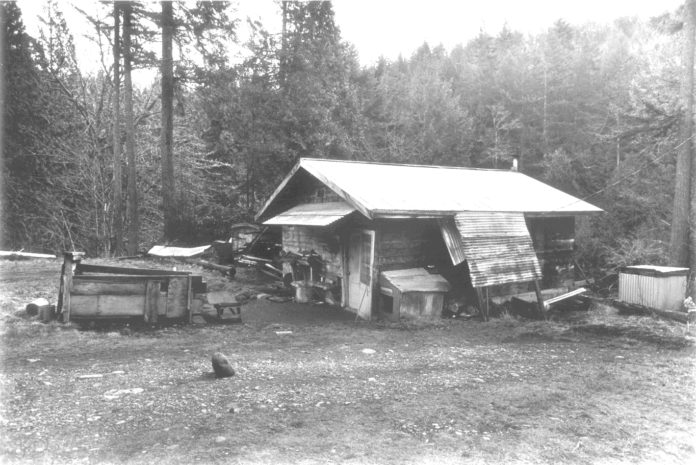Coal mining was dirty work. But coal miners enjoyed a perc not available to many occupations – the wash house. There coal miners disrobed from their street apparel, then donned the mining clothes which hung from baskets in the eaves of the wash house. Following a shift of hard labor, miners reassembled in the wash house where several shower heads provided communal bathing, not dissimilar to locker rooms in high schools. Though the floors were concrete and the benches wooden planks, the miners headed home clean, at time when many homes only had bathtubs, not showers. A coal stove heated the wash house so wet mining clothes would dry before the next shift began.
The No. 10 mine washhouse, picture here was located below the old town of Franklin, just above the west bank of the Green River. After the mine closed in March 1971, this structure was used as a home for Frank Grens, the trusted watchman for Palmer Coking Coal, which operated the No. 10, the last coal mine on the Green River. When Washington State Parks plans solidified for the property to become a central part of the Green River Gorge Conservation Area, a special provision was placed in the 1973 sales agreements allowing Grens to occupy the 20-by-28 foot wooden building for as long as he lived. Frank died a few months before this March 1, 1984 photo was taken and the old washhouse was torn down not long after. It’s now a grassy area on a trail leading to the river in the Franklin Townsite section of the Green River Gorge State Parks ownership.







